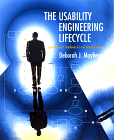
|
|
|
|
Usability Evangelists: The old school» Next: New cool kids on the block Donald NormanDonald Norman is professor emeritus at the University of San Diego and was a user experience architect for Apple for many years. In the field of cognitive psychology, Don Norman is well known for his work on action errors and control processes. In 1986 he wrote "Attention to action: Willed and automatic control of behavior" with Tim Shallice (In R. J. Davidson, G. E. Schwartz, & D. Shapiro (Eds.), Consciousness and self-regulation, New York: Plenum), one of the most cited works on control processes. If you have a burning desire to read one of his academic papers, I recommend "Categorization of action slips". The paper was published in 1981 on Psychological Review, which is a very serious (ok, boring...) academic journal, but it's really really funny and enlightning.
"Anyone who designs anything to be used by humans--from physical objects to computer programs to conceptual tools--must read this book, and it is an equally tremendous read for anyone who has to use anything created by another human. It could forever change how you experience and interact with your physical surroundings, open your eyes to the perversity of bad design and the desirability of good design, and raise your expectations about how things should be designed." If you want to know what Don Norman is doing now, you can visit his web page, as well as the page of his company, the Nielsen-Norman group, which he founded with Jakob Nielsen. Jakob NielsenFor some Jakob Nielsen is the most influencial usability guru; for others, his emphasis on guidelines and discount usability methods has done more damage than good to the field. For sure, the world of usability has a love-hate relationship with Jakob (for one of many examples of making fun of him see the dancing Jacob Nielsen). Nobody can deny that he is smart, insanely successful, has been in the field for a long time, and knows how to communicate. Jakob Nielsen was the usability lead for Sun's website and intranet (SunWeb), including the original SunWeb design in 1994. Before that, he worked at Bellcore (Bell Communications Research), at the Technical University of Denmark, and at the IBM User Interface Institute at the T.J. Watson Research Center.
Jakob Nielsen has a bi-weekly column on Web Usability, Alertbox. Everybody in the field reads Alertbox, either to follow its suggestions or to criticize it. Jakob's vision of web usability has been distilled in a recent book, Designing Web Usability: The Practice of Simplicity. Jakob Nielsens is the author of many other books, among which the classic Usability Engineering. This book was written in 1994 but it is still a good tool for software usability. Bruce Tognazzini
Bruce Tognazzini has a monthly column on usability, AskTog. One interesting aspect of this web column is that Tog publishes reader comments, making AskTog a forum more than a site of evangelic teachings. Bruce Tognazzini is the author of Tog on Interface and Tog on Software Design. Jef Raskin
Raskin claims that human interaction with computers can be reduced to few elementary operations (such as selection, indication, activation, moving, and copying) and that linking those operations to keyboard shortcuts rather than menus would greatly improve efficiency of interfaces. In his vision, software should consist not of self-contained and separated applications but of general-purpose command sets that increase functionality of the interface as a whole. Alan Cooper
Alan Cooper is the author of About Face: The Essentials of User Interface Design (now in its second edition), and the highly recommended The Inmates Are Running the Asylum. Alan Cooper is the founder of the design firm named after him (Cooper), and based in San Francisco. Deborah Mayhew
Deborah Mayhew is also the editor of the very famous and often quoted Cost-Justifying Usability. This book examines cost and benefits of usability and quantifies in detail how much money users and companies lose because of bad design. Finally, the great thing about Deborah Mayhew is that she gives us all a lot of hope on our future quality of life. Guess where her firm (Deborah J. Mayhew & associates) is... In MARTHA'S VINEYARD!!! Aaagggh! Envy... |
|
|
|

|
|





